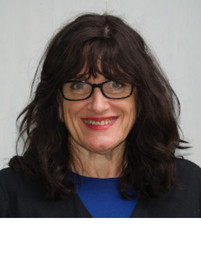Yes, Teachers are Public Speakers Too!
Most possess the confidence and skills to speak to an individual, but public speaking for teachers is another thing altogether…
One of the essential characteristics of being an educator is the ability to communicate effectively. A person may be an expert on a particular subject, but if they are unable to communicate it well, the students’ learning will suffer.
There are many different contexts where you, as an educator, may be required to speak to an audience. But there’s one occasion that will come up on a daily basis – public speaking in your classroom!
As a teacher, you are in a position to influence your students in many ways. You aim to impart knowledge, instill a love of learning, and help prepare them for higher education and successful careers. Here are some effective public speaking skills for the classroom:
Be interactive: Students are not passive listeners, but active participants. Lecturing is now being replaced by active learning and student engagement.
Flexibility: A teacher must learn to adapt frequently, depending on the student response.
Creativity: A teacher can use creative ways to present the lesson and encourage learning. One of the greatest advantages of communicating in the classroom is that you are well acquainted with your audience. Knowing the strengths and weaknesses of your students can help you prepare your lesson in a way that can benefit students at different levels of performance. If you have students who are from a different culture, be considerate when giving examples, analogies and other related work.
Public Speaking for Teachers Tips & Tricks:
Verbal skills: Remember to articulate well and pace your lesson depending on the ages and abilities in your classroom. Keep your vocabulary and content age appropriate.
Nonverbal skills: Your students can pick up many signals from your nonverbal communication. Positive body language encourages questions, participation, and feedback.
Presentation Aids: Keep your presentation aids age relevant, interesting, and creative.
Additional tips for the K-2 level:
- Speak slowly and articulate well. Use simple words and explain the meaning of new vocabulary. Ask questions and encourage student involvement.
- Smile frequently and speak with a warm, gentle, and friendly tone.
- Listen well to what your students have to say. This is an excellent source of feedback that will help you reflect on the areas that need to be addressed.
- Call your students by name and maintain eye contact.
As an educator, you communicate words of importance on a daily basis. The words you speak affect many. However, communication is not only about the words used, but the way a message is conveyed. What you communicate and the way you do it matters.
Become a public speaking pro with the self-study online PD course: Public Speaking for Teachers
January 2021 Editor’s Note: This post was originally published in June 2015 and has been updated for accuracy and comprehensiveness.
 About the Author
About the Author
Ellen Paxton is a respected expert in education and best known as the Chief Learning Officer of Professional Learning Board. As a two-time National Board Certified Teacher, Ellen has successfully published and customized online professional development courses and Learning Management Systems for 20 years to help teachers meet their state continuing education renewal credit requirements. Through ProfessionalLearningBoard.com, RenewaTeachingLicense.com, and ConnectedPD.com, Ellen has established solutions and maintained partnerships with several accredited universities, higher education institutions, teachers’ unions and state Departments of Education while setting strategic direction that makes a difference and overseeing implementation of popular online PD for schools.

Comments are closed.